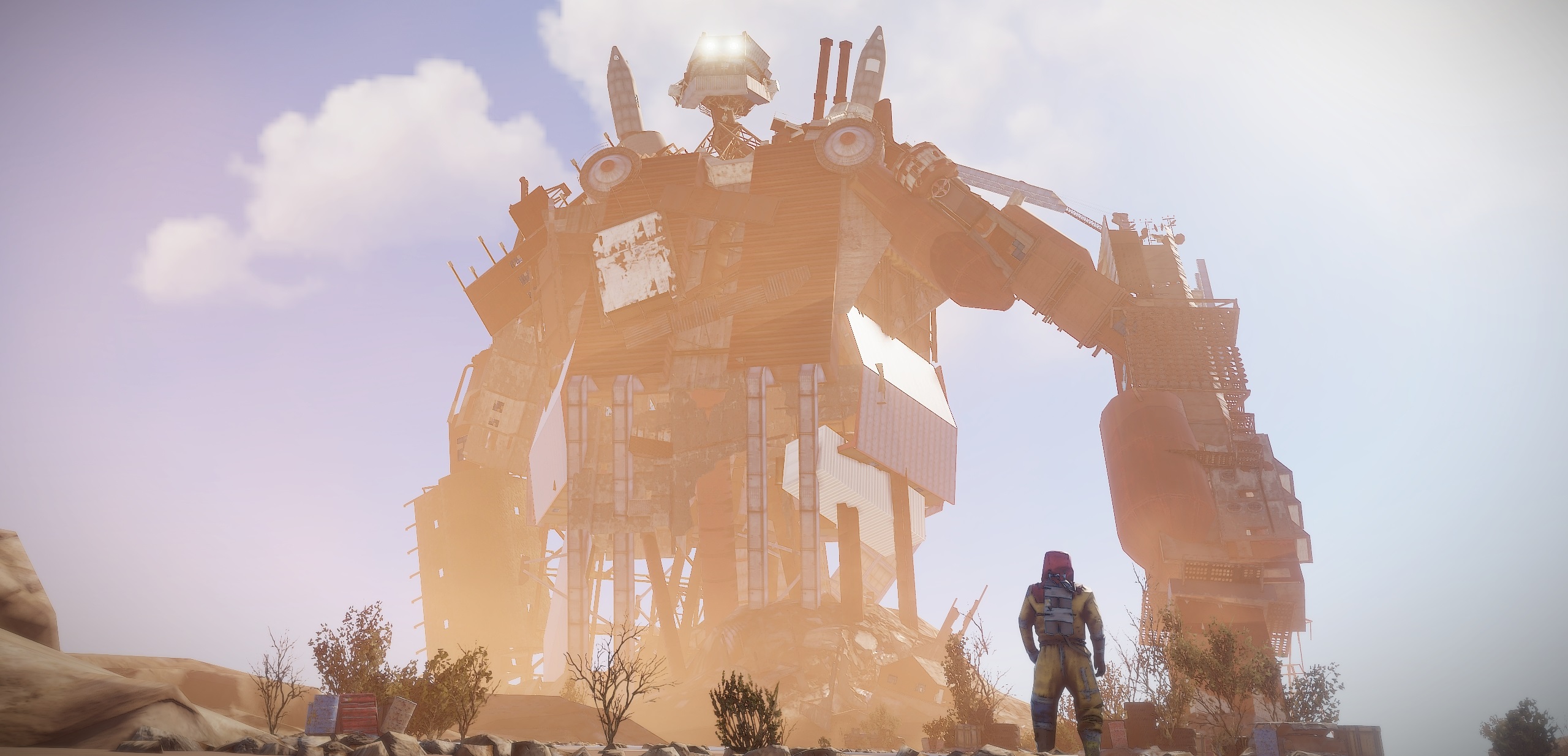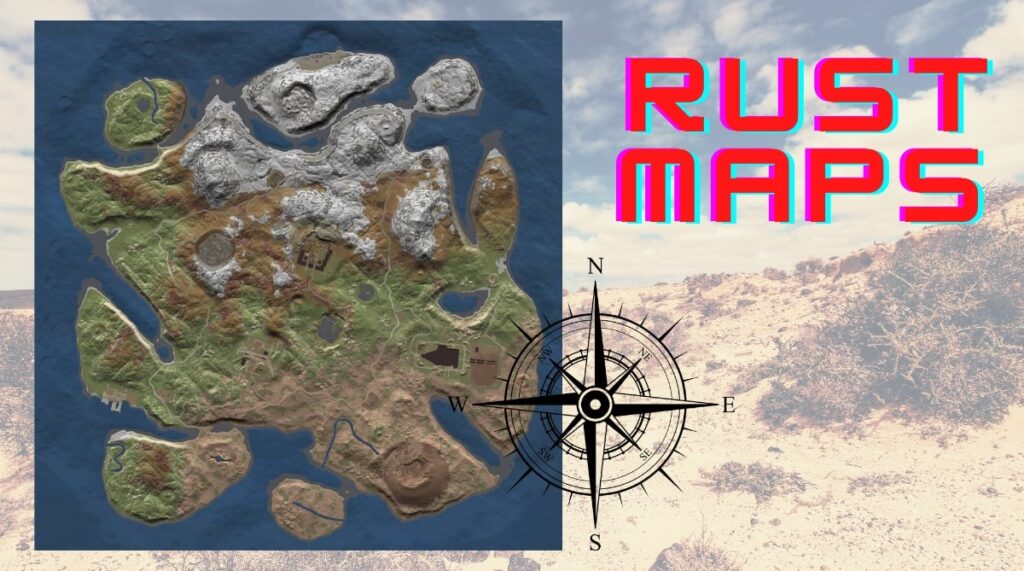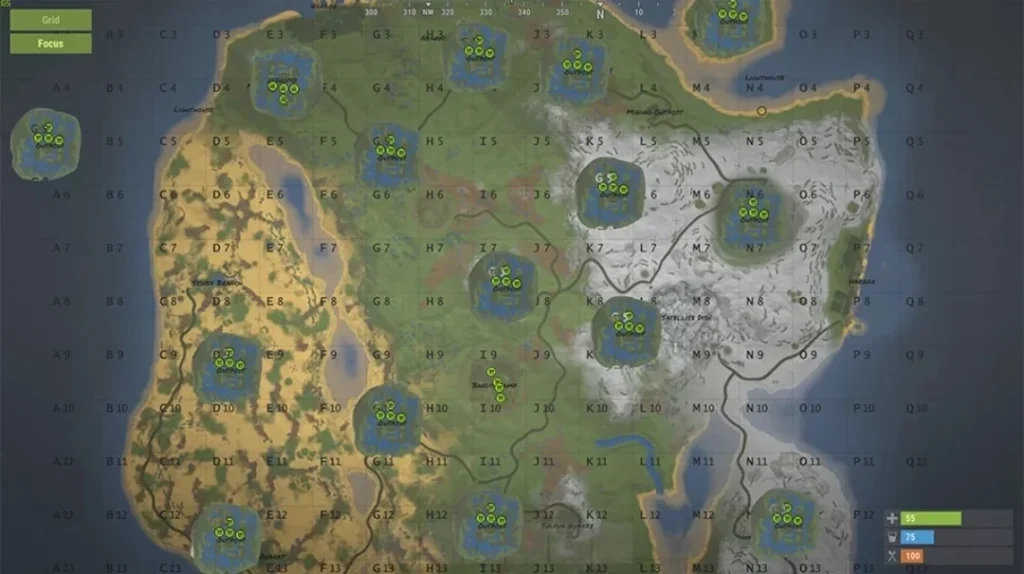
Rust is a popular survival game known for its intense player-versus-player (PVP) combat, base building, and exploration. While the default game maps offer a rich experience, Rust custom maps bring even more variety and creativity into the game. Whether you want to host your own server or explore unique worlds, custom maps allow for new and exciting gameplay experiences. In this guide, we’ll dive into Rust custom maps, custom map servers, and how to use a Rust live map for better navigation in the game.
What Are Rust Custom Maps?
Rust custom maps are player-created maps that differ from the default game-generated worlds. They offer unique landscapes, custom designs, and often include creative elements that cater to different playstyles. These maps can range from challenging survival environments to highly detailed, scenario-driven worlds with built-in puzzles, mazes, or even PVP battle arenas.

Why Play Custom Maps?
- Variety: Custom maps provide a fresh experience for Rust veterans who want to break away from the standard map design.
- Custom Challenges: Many custom maps include custom objectives, special events, or new challenges designed by map creators.
- Unique Designs: These maps often feature unique terrain, hidden areas, and layouts that deviate from Rust’s standard procedural generation.
- Community Engagement: Playing or hosting on custom maps allows you to engage with the community, showcase your own designs, or explore others’ creativity.
Best Rust Custom Maps
Here are some of the best Rust custom maps that stand out for their creativity and gameplay:
1. Hapis Island (Custom Version)
Hapis Island is one of Rust’s well-known pre-made maps, but custom versions offer tweaks and expansions to the original layout. Players can explore new hidden areas, enhanced resource points, and custom events.
- Best For: Classic Rust gameplay with a twist.
- Features: Custom monuments, hidden loot areas, and expanded terrain.
2. Desert Survival
The Desert Survival map focuses on harsh desert terrain, limited water sources, and sparse resources, making survival more challenging. It’s ideal for players who enjoy tough survival conditions with limited room for error.
- Best For: Hardcore survivalists.
- Features: Reduced resources, harsh climate, and unique desert-based monuments.
3. Lost World
Lost World is a custom map that blends jungle, mountains, and ancient ruins. It introduces puzzles and hidden treasures scattered across the map, encouraging exploration. With custom monuments and caves, this map is perfect for players who enjoy exploration and discovery.
- Best For: Exploration and puzzle-solving.
- Features: Dense jungles, hidden caves, and ancient ruins.
4. Battle Arena
This is a custom PVP-focused map designed for fast-paced combat. Battle Arena maps are often used in Rust custom map servers for events and tournaments. Players can engage in team-based skirmishes or solo deathmatches in specially designed arenas with different layouts.
- Best For: PVP events and tournaments.
- Features: Pre-made arenas, spectator areas, and weapon drops.
Rust Custom Map Servers
Hosting or joining a Rust custom map server allows you to experience these unique maps with other players. Here’s how you can set up or join custom map servers in Rust.

How to Host a Custom Map Server in Rust
If you want to host your own Rust server and run custom maps, follow these steps:
Step 1: Set Up a Rust Server
- Download Rust Server Files: You can use SteamCMD to install and manage your Rust server files.
- Install Oxide Mod: Most custom maps require Oxide or another modding framework for Rust. Install Oxide from its official site to allow for plugin and map support.
- Download the Custom Map: You can find custom maps on modding sites such as RustEdit or Rust Maps. Download the map file, usually in
.mapor.savformat. - Upload the Map to Your Server: In the Rust server directory, upload the custom map file to the maps folder.
- Edit the Command Line: Modify your server’s startup command to load the custom map. Use the following format:arduinoКопіювати код
+server.level "MapFileName.map" - Start the Server: Launch your server, and it will load the custom map you’ve added.
Step 2: Configure Server Settings
Once the custom map is set up, configure server settings for player counts, PVP rules, and resource spawns. Use plugins available through Oxide to further customize gameplay.
Joining Custom Map Servers
If you’re interested in joining a Rust server with custom maps, here’s how to find and connect to one:
- Open Rust: Launch Rust and go to the Modded section in the server browser.
- Search for Custom Map Servers: Many servers indicate in their titles if they are running custom maps. Look for keywords like “custom map,” “modded map,” or specific map names (e.g., Hapis Custom).
- Direct Connect: If you know the server’s IP address, you can use the console (
F1) to connect directly using the command:arduinoКопіювати кодconnect serverip:port
Rust Game Map: Procedural vs. Custom
By default, Rust generates a procedural map for each server. These maps are randomized each time they are generated, featuring different terrain, monuments, and resource nodes. The Rust game map you get by default is usually random, but you can control certain parameters like map size and seed.
- Procedural Maps: These maps are generated using Rust’s map seed system, creating a different layout each time.
- Custom Maps: Player-made maps that are designed specifically for certain experiences or playstyles.
Custom maps give players the option to bypass the randomness of procedural generation, instead providing a tailored experience with more intentional design and custom content.
Rust Live Map
A Rust live map is an interactive, real-time map of the game world, showing players, monuments, and resources as they move around the map. Live maps are incredibly useful for navigating the world, coordinating with teammates, and keeping track of resources.

How to Use a Rust Live Map
To use a live map for Rust, follow these steps:
- Install the Live Map Plugin: Most Rust live maps require a plugin like Rust. Server admins can install Ruston their server to enable live map functionality.
- Access the Map: Once enabled, you can access the live map in-game through a web browser. The server will typically provide a URL for the live map.
- Track Player Locations: Use the live map to see the positions of players (if enabled), monuments, and resource nodes in real time. This is especially helpful for navigating large servers or coordinating team movements in multiplayer.
Popular Rust Live Map Tools:
- Rust: A popular live map tool that allows players to view real-time maps of the game world.
- Beancan: A live map service that provides both real-time maps and custom server information.
Conclusion
Rust custom maps bring a whole new layer of creativity and excitement to the game, whether you’re looking for survival challenges, exploration adventures, or competitive PVP arenas. Hosting or joining Rust custom map servers opens up a world of possibilities for gameplay beyond the standard procedural generation. Additionally, using a Rust live map will help you navigate these vast worlds more easily and coordinate better with your team. Dive into the world of custom maps in Rust and explore the endless possibilities!


